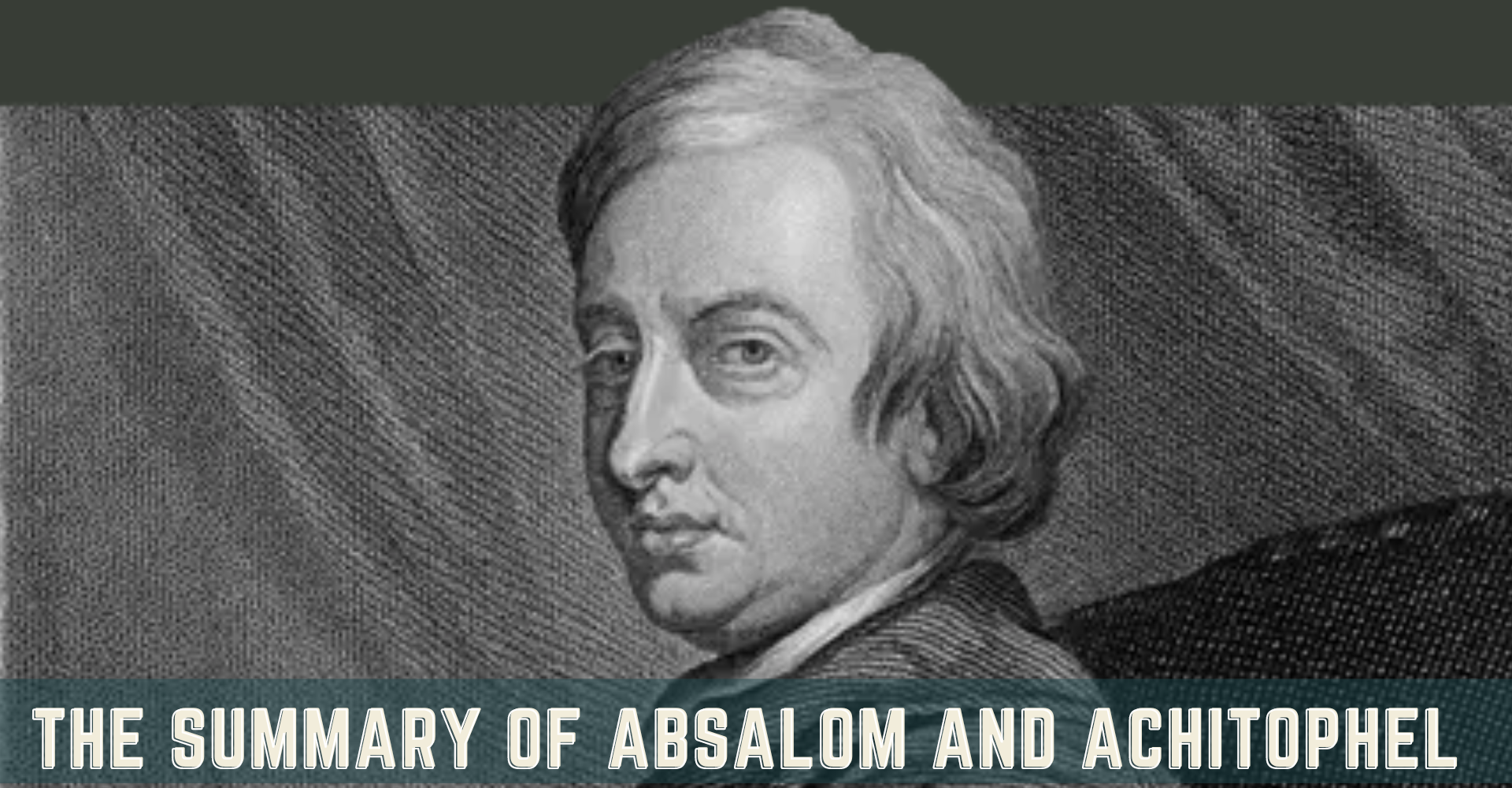It is generally acclaimed that Absalom and Achitophel is the greatest achievement of Dryden which finds hardly any parallel in the whole range of English literature. The poem has evoked great interest in Dryden’s contemporaries and in the succeeding generations of students of poetry. Some have been attracted to it for its portrait gallery, some for its satire some for its Biblical parallelism and yet some for its satire, some for its versification. Before we take up the various aspects of the poem we shall do well to acquaint ourselves with certain preliminary data.
Occasion of the Poem, Charles II was restored to the English throne in 1660. He married Catherine of Braganza in May 1662, but he had no issue by her. Seventeen years had passed, but they were not likely to have any issue. Consequently in 1679, the question of succession began to assume prominence. In the event of the king leaving no legitimate child, the crown would revert to the Duke of York. But the Duke of York was an avowed Papist. Prejudice against Papacy was as the strongest as a result of which two great parties were formed. John Churton Collins sums up the position of the two parties: “The one party insisted on the exclusion of the Duke of York from the right of succession on the ground of his religion. These were the Petitioners, afterwards nicknamed Whigs and Exclusionists, their leader was the Earl of Shaftesbury. The other party, strongest among churchmen and the aristocracy were anxious, partly in accordance with the theory of the divine right of Kings and the duty of passive obedience, and partly with an eye of their own interests, to please the King by supporting the claim of his brother. These were the Abhorrers, afterwards nicknamed Tories.”
The Exclusionists aimed at inflaming the public opinion against the Catholics. Titus Oates exerted his energies to achieving the end and began spreading lies that the Roman Catholics were indulging in criminal plots to murder the King and restore Catholicism in England. The secret dealings of Charles II with the French King made the people readily believe Oates’ lies. The leading principle of the Exclusionists led by the Earl of Shaftesbury, now became a thing of hatred for the Duke of York and Popery. Shaftesbury, at last, launched a plot to secure, if possible, the succession of the Duke of Monmouth, the illegitimate child of Charles II by Lucy Walters. With this object, he attempted to gain the confidence of the people and the King. Popular excitement increased. All centered on the Exclusion Bill, which on the 11th of November 1680, triumphantly passed in the Commons, but was defeated in the House of Lords. The Parliament was dissolved in January 1681. The popular frenzy was high and was uncontrollable. The next Parliament was summoned to meet at Oxford. It met amid fret and fury and was soon dissolved. The King feared a Civil War and decided to strike a blow against the Earl of Shaftesbury whom Churton Collins called ‘the arch-enemy of the public peace.’ Shaftesbury was arrested in July and was thrown into the Tower to await his trial at the Old Bailey.
Wallace Maurer, in the course of his valuable dissertation, examines at length the possibility of Edward Seymour, Dryden‘s Amiel in the poem, urging Dryden to write Absalom and Achitophel and concludes: “So we must, at least continue to be cautions about accepting the tradition linking King Charles II with the composition of Absalom and Achitophel. Of course, if we could incline toward Seymour, we would not know exactly what he offered Dryden. But certainly a contemporary rumour that Dryden wrote Absalom and Achitophel at the instance of Edward Seymour should not be dismissed as preposterous in the present state of our knowledge.
PLEASE HELP ME TO REACH 1000 SUBSCRIBER ON MY COOKING YT CHANNEL (CLICK HERE)











